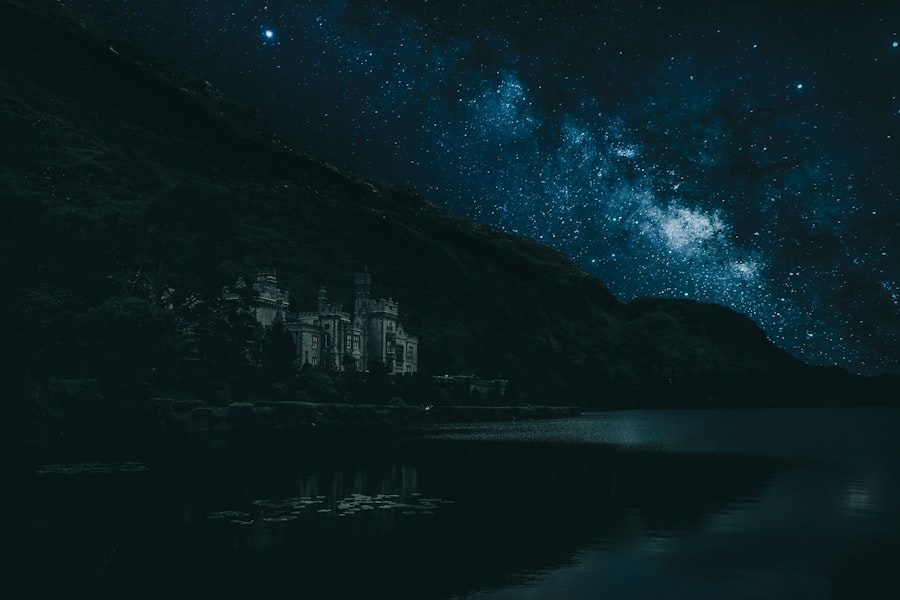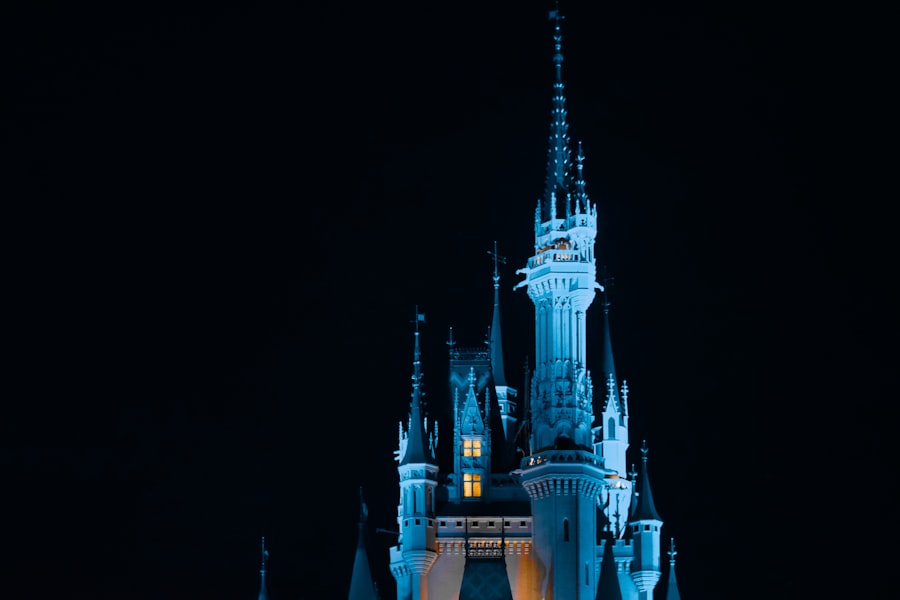Gothic fiction emerged in the late 18th century, a period marked by significant social, political, and cultural upheaval in Europe. The genre is often traced back to Horace Walpole’s seminal work, “The Castle of Otranto,” published in 1764. This novel introduced readers to a world filled with supernatural elements, dark castles, and a sense of foreboding that would become hallmarks of the genre.
Walpole’s blend of romance and horror set the stage for future writers, establishing a template that would be emulated and expanded upon in subsequent works. The term “Gothic” itself was initially used to describe the medieval architecture that inspired the settings of these stories, characterized by their towering spires and intricate designs, which evoked a sense of mystery and the sublime. As the genre evolved, it became intertwined with the Romantic movement, which emphasized emotion, nature, and individualism.
Authors began to explore themes of isolation, madness, and the supernatural, reflecting the anxieties of a society grappling with rapid industrialization and the Enlightenment’s rationalism. The Gothic novel often served as a counterpoint to the rationalist ideals of the time, delving into the darker aspects of human experience. This exploration of the human psyche and its fears resonated with readers, allowing them to confront their own anxieties in a safe and imaginative space.
The genre’s roots in both medievalism and Romanticism created a rich tapestry from which later authors would draw inspiration.
Key Takeaways
- Gothic fiction originated in the 18th century as a reaction to the rationalism of the Enlightenment, focusing on the mysterious, supernatural, and macabre.
- Key elements of Gothic fiction include eerie settings, supernatural occurrences, a sense of impending doom, and complex, often tormented characters.
- Prominent Gothic fiction authors include Mary Shelley, Edgar Allan Poe, and Bram Stoker, who have made significant contributions to the genre.
- Gothic fiction has had a profound influence on literature and culture, inspiring countless adaptations in film, television, and other media.
- Contemporary Gothic fiction continues to captivate audiences with its exploration of dark themes, psychological depth, and haunting atmospheres, demonstrating the enduring appeal of the genre.
Key Elements of Gothic Fiction
The Setting: A Character in Its Own Right
The setting of a Gothic fiction story is often situated in decaying castles, haunted mansions, or remote landscapes that evoke a sense of dread and isolation. These locations serve not only as backdrops but also as characters in their own right, embodying the fears and secrets of the narratives.
Supernatural Elements and Psychological Insights
The architecture itself often reflects the psychological states of the characters, with crumbling walls and dark corridors symbolizing decay and despair. Another essential element is the presence of supernatural phenomena or unexplained occurrences that challenge the boundaries of reality. Ghosts, monsters, and otherworldly beings frequently populate Gothic tales, serving as manifestations of repressed fears or societal anxieties.
Moral Ambiguity and Emotional Intensity
Gothic fiction often features complex characters who embody moral ambiguity. Protagonists may be tormented souls struggling with their desires or haunted by past traumas. Antagonists are frequently depicted as charismatic yet malevolent figures whose motivations are shrouded in mystery. This complexity allows for rich character development and invites readers to explore the darker aspects of human nature. The emotional intensity of these characters’ experiences amplifies the genre’s exploration of fear, desire, and existential dread.
Prominent Gothic Fiction Authors

Several authors have made significant contributions to Gothic fiction, each bringing their unique voice and perspective to the genre. Mary Shelley is perhaps one of the most influential figures, with her groundbreaking novel “Frankenstein,” published in 1818. Shelley’s work not only explores themes of creation and responsibility but also delves into the consequences of scientific ambition.
The creature in “Frankenstein” embodies societal fears surrounding unchecked progress and the potential for monstrosity within humanity itself. Shelley’s blending of Gothic elements with philosophical inquiry has cemented her place as a cornerstone of both Gothic literature and science fiction.
His short stories and poems often explore themes of death, madness, and existential despair. In tales like “The Tell-Tale Heart” and “The Fall of the House of Usher,” Poe masterfully employs unreliable narrators to immerse readers in the psychological turmoil of his characters. His use of vivid imagery and rhythmic language creates an atmosphere of dread that lingers long after the final page is turned.
Poe’s influence extends beyond literature; his exploration of the macabre has permeated popular culture, inspiring countless adaptations in film and art. Other notable authors include Bram Stoker, whose iconic novel “Dracula” redefined vampire lore and established many conventions still prevalent in contemporary horror fiction. Stoker’s portrayal of Count Dracula as both a seductive figure and a monstrous predator reflects societal anxieties surrounding sexuality and immigration during the Victorian era.
Additionally, authors like Ann Radcliffe and Sheridan Le Fanu contributed significantly to the genre’s development through their exploration of female agency and psychological horror. Each of these writers has shaped Gothic fiction’s evolution, ensuring its relevance across generations.
The Influence of Gothic Fiction on Literature and Culture
The impact of Gothic fiction extends far beyond its own genre; it has profoundly influenced literature, art, film, and even psychology. The themes explored in Gothic literature—such as fear, isolation, and the supernatural—have permeated various literary movements, including modernism and postmodernism. Writers like Franz Kafka and Virginia Woolf have drawn on Gothic elements to explore existential themes and the complexities of human consciousness.
The psychological depth found in Gothic fiction has paved the way for contemporary explorations of identity and trauma in literature. In addition to its literary influence, Gothic fiction has left an indelible mark on visual arts and popular culture. The aesthetic associated with Gothic literature—characterized by dark colors, intricate designs, and haunting imagery—has inspired countless artists throughout history.
The Romantic painters, such as Caspar David Friedrich, captured the sublime beauty of nature while evoking feelings of melancholy reminiscent of Gothic themes. In modern times, filmmakers like Tim Burton have embraced Gothic aesthetics in their works, blending whimsy with darkness to create visually striking narratives that resonate with audiences. Moreover, Gothic fiction has played a significant role in shaping cultural perceptions of fear and horror.
The genre’s exploration of societal anxieties—ranging from fears about technology to concerns over gender roles—has allowed it to remain relevant across different historical contexts. The archetypes established in Gothic literature continue to inform contemporary horror films and literature, from psychological thrillers to supernatural tales. As society grapples with new fears and uncertainties, Gothic fiction provides a lens through which these issues can be examined, ensuring its enduring significance in cultural discourse.
Contemporary Gothic Fiction
In recent years, contemporary Gothic fiction has experienced a resurgence as authors explore new themes while remaining rooted in traditional elements. Writers like Silvia Moreno-Garcia have revitalized the genre by infusing it with diverse cultural perspectives. Her novel “Mexican Gothic” combines classic Gothic tropes with Mexican folklore, creating a narrative that addresses issues such as colonialism and gender dynamics within a hauntingly atmospheric setting.
This blending of cultural elements not only enriches the genre but also broadens its appeal to a wider audience. Another notable contemporary author is Tana French, whose psychological thrillers often incorporate Gothic elements into their narratives. In her Dublin Murder Squad series, French delves into the complexities of human relationships while exploring themes of memory and trauma against darkly atmospheric backdrops.
Her ability to weave intricate plots with deep character studies reflects a modern interpretation of Gothic fiction that resonates with contemporary readers seeking both suspense and emotional depth. Furthermore, graphic novels have emerged as a popular medium for contemporary Gothic storytelling.
The visual nature of graphic novels allows for a unique interpretation of Gothic aesthetics, enhancing the emotional impact through striking illustrations that evoke feelings of dread and wonder simultaneously. This evolution within the genre demonstrates its adaptability to new forms while maintaining its core themes.
The Enduring Appeal of Gothic Fiction

The enduring appeal of Gothic fiction lies in its ability to tap into universal human fears and desires while providing an escape into worlds filled with mystery and intrigue. Readers are drawn to the genre’s exploration of darkness—both external threats and internal struggles—allowing them to confront their own fears within a fictional context. The emotional intensity found in Gothic narratives resonates deeply with audiences seeking catharsis through vicarious experiences.
Moreover, the genre’s rich symbolism offers layers of meaning that invite analysis and interpretation. From haunted houses representing psychological states to monsters embodying societal fears, Gothic fiction serves as a mirror reflecting cultural anxieties across time periods. This depth ensures that each reading can yield new insights, making it a rewarding experience for both casual readers and literary scholars alike.
Finally, the aesthetic allure of Gothic fiction captivates audiences through its evocative imagery and atmospheric settings. The interplay between light and shadow creates a sense of mystery that draws readers into immersive worlds where anything is possible. Whether through literature, film, or visual art, the haunting beauty associated with Gothic themes continues to inspire creativity across various mediums.
In conclusion, Gothic fiction remains a vital part of literary history and culture due to its exploration of complex themes related to fear, identity, and morality. Its ability to adapt while retaining core elements ensures that it will continue to resonate with audiences for generations to come.
If you are interested in exploring the world of Gothic Fiction further, you may also enjoy reading about Logical Appraisal, Inconsistency, and Reasoning. This article delves into the intricacies of logical thinking and how it can be applied to various aspects of life and literature, providing a thought-provoking companion piece to Shadows of Imagination.






















+ There are no comments
Add yours